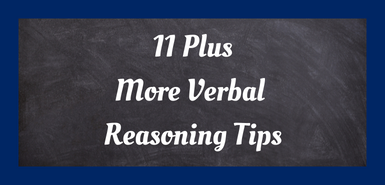Here are my top tips:
Collective nouns: Try to make a list of collective nouns for different objects such as animals, people, birds, everyday objects. Give your child a noun and then ask them to name the collective noun for a group of that noun. For example, the noun “sheep” has the collective noun “flock”. You can also give your child the name of a collective noun, such as “flock” and ask your child to list the noun or nouns that have “flock” as a collective noun. In this case, you have multiple nouns such as sheep, birds and so on. It’s worth noting that some nouns have more than one collective noun name and that some collective nouns are unusual and very specific. You will certainly discover some interesting names for groups of items the more you research this topic!
Vocabulary and groups: Some verbal reasoning questions test your child’s knowledge of the names of fruits, vegetables, flowers, trees, types of woods, metals, colours, military ranks, food groups and so on. Ideally, the more of these your child knows the better. Also, your child should be able to identify which category an item or noun would belong to. For example, that steel is a type of metal, that a beige is a colour and so on. If you have a garden or a nearby park for example, try to see if you can identify the flowers and leaves of trees. You could try taking pictures with your phone and having your child make a digital scrapbook of the images with their correct names. You can use software such as Google Slides or Microsoft Powerpoint to create your scrapbook. You can also find lists of common and more unusual fruits, vegetables, flowers etc. online and curate your own resources to help expand your child’s knowledge bank.
Vocabulary groups and their size and order: It is helpful for your child to be able to place a series of objects in order of size or sequence. It is also important for your child to be able to identify which item would come in a certain position such as third, fifth and so on. A good way to practise this skill is to give your child the names of some items that belong in the same category and then ask them to rank the items in terms of size, rank etc. For example, mouse, dog and cat can be ranked in order of size starting with the smallest: mouse, cat and then dog. If your child is struggling to know the size of some things, then you can physically show them the object where possible, or you can show them pictures to help them understand. Have your child learn the basic army ranks and then write or print them onto individual slips of paper and then ask your child to put them in order starting with the lowest rank.
Number patterns and sequences: Numbers and mathematical skills are also tested in the verbal reasoning paper. One of the most common maths based questions is number codes. For example, a series of numbers is given and your child has to complete the series with the missing numbers. This technique involves working out number patterns and how one number changes into another by adding, subtracting, multiplying or dividing by another number. In some questions a combination of mathematical operations are used in the pattern. You can buy puzzle books that include similar types of activities and you can give your child a beginning number, such as 3 and ask them what the next five numbers would be if you added a specific number, such as 6 each time.
Algebraic questions and puzzles: Another common maths based question type on the eleven plus verbal reasoning paper involves a series of letters being given a numerical value and then a series of sums are given that involve substituting the number values for the letters and solving the equation. You can find puzzle books that have these equations in, or you can create simple ones for your child to solve. For example: A = 5, B = 3 and C = 2 and D = 1. What is the answer to A + B - C - D?
Let me know how you get on with the tips by commenting in the comments section below. I love to get feedback from my readers and followers! Don’t forget to check out my Puzzles page on my website, where your child can practise some of these skills talked about in this post! Click on the link:www.topmarkseducation.co.uk/Resources/Puzzles

This comment has been removed by the author.
ReplyDelete